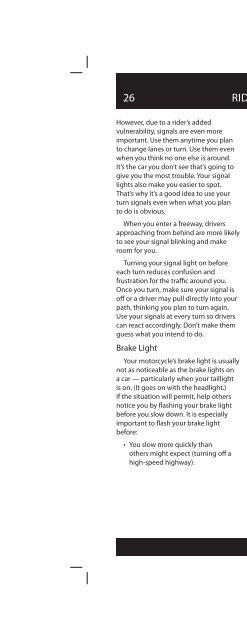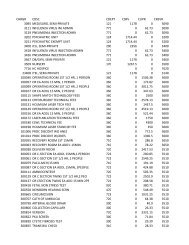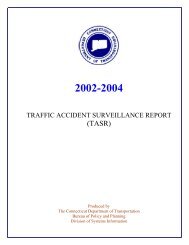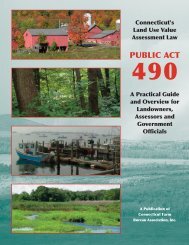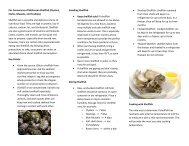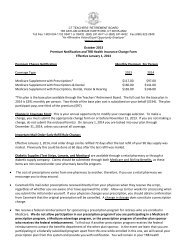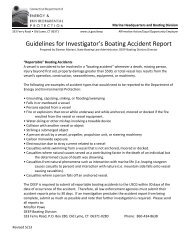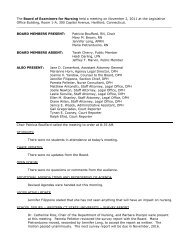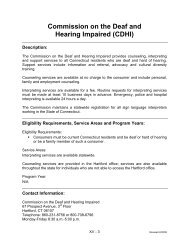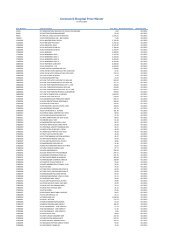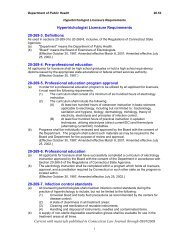The Connecticut Motorcycle Operator's Manual - CT.gov
The Connecticut Motorcycle Operator's Manual - CT.gov
The Connecticut Motorcycle Operator's Manual - CT.gov
Create successful ePaper yourself
Turn your PDF publications into a flip-book with our unique Google optimized e-Paper software.
26 RIDE WITHIN YOUR ABILITIES<br />
However, due to a rider’s added<br />
vulnerability, signals are even more<br />
important. Use them anytime you plan<br />
to change lanes or turn. Use them even<br />
when you think no one else is around.<br />
It’s the car you don’t see that’s going to<br />
give you the most trouble. Your signal<br />
lights also make you easier to spot.<br />
That’s why it’s a good idea to use your<br />
turn signals even when what you plan<br />
to do is obvious.<br />
When you enter a freeway, drivers<br />
approaching from behind are more likely<br />
to see your signal blinking and make<br />
room for you.<br />
Turning your signal light on before<br />
each turn reduces confusion and<br />
frustration for the traffi c around you.<br />
Once you turn, make sure your signal is<br />
off or a driver may pull directly into your<br />
path, thinking you plan to turn again.<br />
Use your signals at every turn so drivers<br />
can react accordingly. Don’t make them<br />
guess what you intend to do.<br />
Brake Light<br />
Your motorcycle’s brake light is usually<br />
not as noticeable as the brake lights on<br />
a car — particularly when your taillight<br />
is on. (It goes on with the headlight.)<br />
If the situation will permit, help others<br />
notice you by fl ashing your brake light<br />
before you slow down. It is especially<br />
important to fl ash your brake light<br />
before:<br />
• You slow more quickly than<br />
others might expect (turning off a<br />
high-speed highway).<br />
• You slow where others may not<br />
expect it (in the middle of a block or<br />
at an alley).<br />
If you are being followed closely, it’s<br />
a good idea to fl ash your brake light<br />
before you slow. <strong>The</strong> tailgater may be<br />
watching you and not see something<br />
ahead that will make you slow down.<br />
This will hopefully discourage them from<br />
tailgating and warn them of hazards<br />
ahead they may not see.<br />
Using Your Mirrors<br />
While it’s most important to keep<br />
track of what’s happening ahead, you<br />
can’t aff ord to ignore situations behind.<br />
Traffi c conditions change quickly.<br />
Knowing what’s going on behind is<br />
essential for you to make a safe decision<br />
about how to handle trouble ahead.<br />
Frequent mirror checks should be part<br />
of your normal searching routine. Make<br />
a special point of using your mirrors:<br />
• When you are stopped at an<br />
intersection. Watch cars coming up<br />
from behind. If the drivers aren’t<br />
paying attention, they could be on<br />
top of you before they see you.<br />
• Before you change lanes. Make<br />
sure no one is about to pass you.<br />
• Before you slow down. <strong>The</strong> driver<br />
behind may not expect you to slow,<br />
or may be unsure about where you<br />
will slow. For example, you signal a<br />
turn and the driver thinks you plan<br />
to turn at a distant intersection,<br />
rather than at a nearer driveway.


